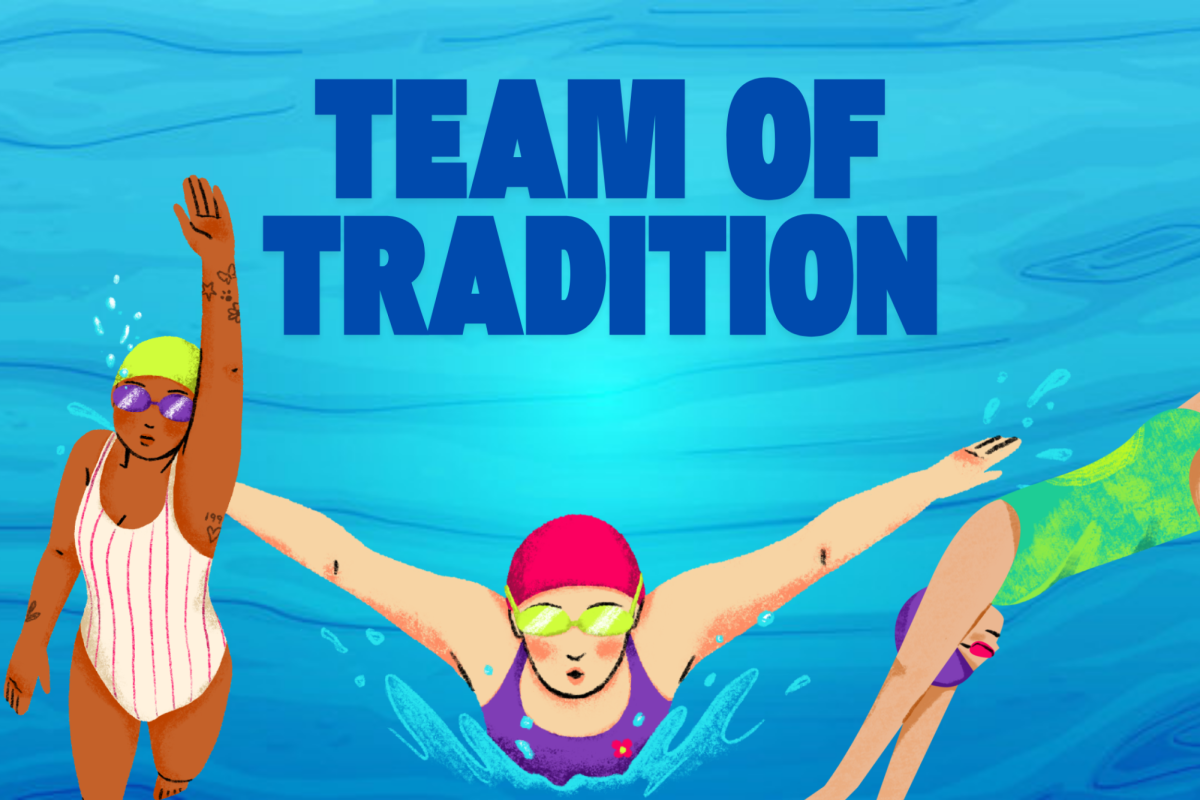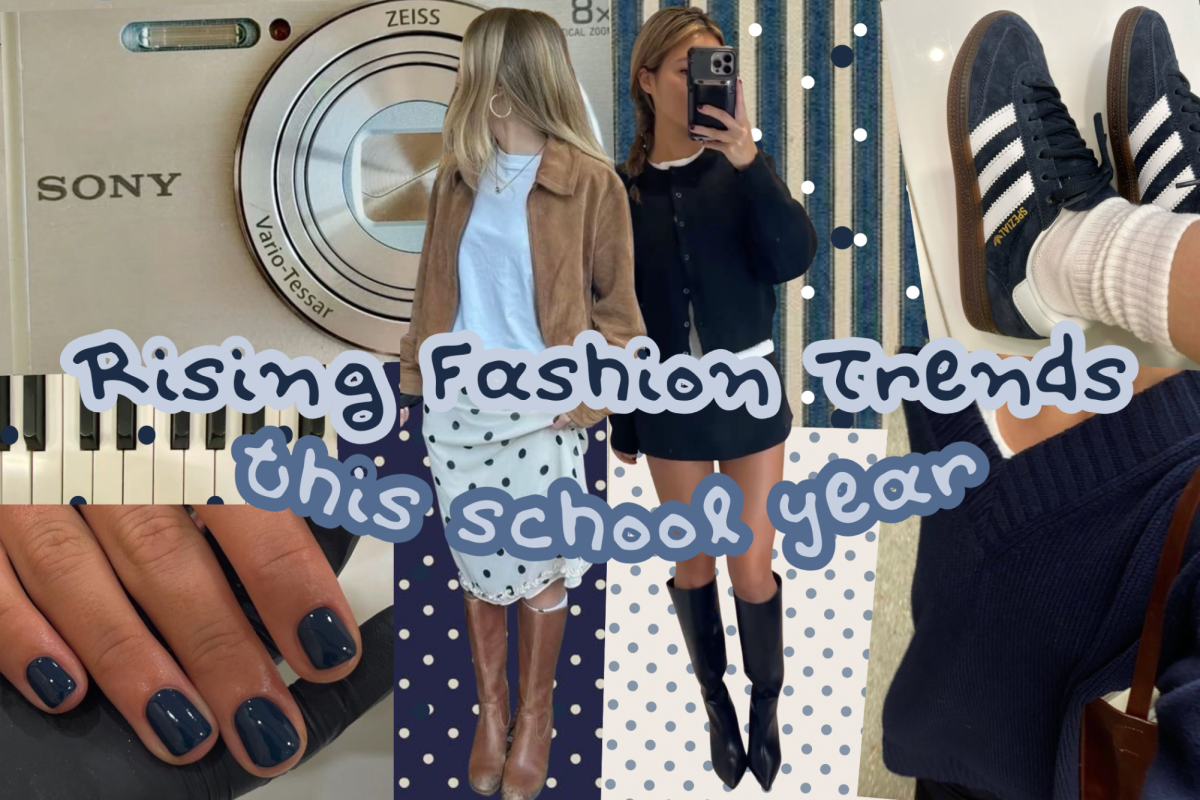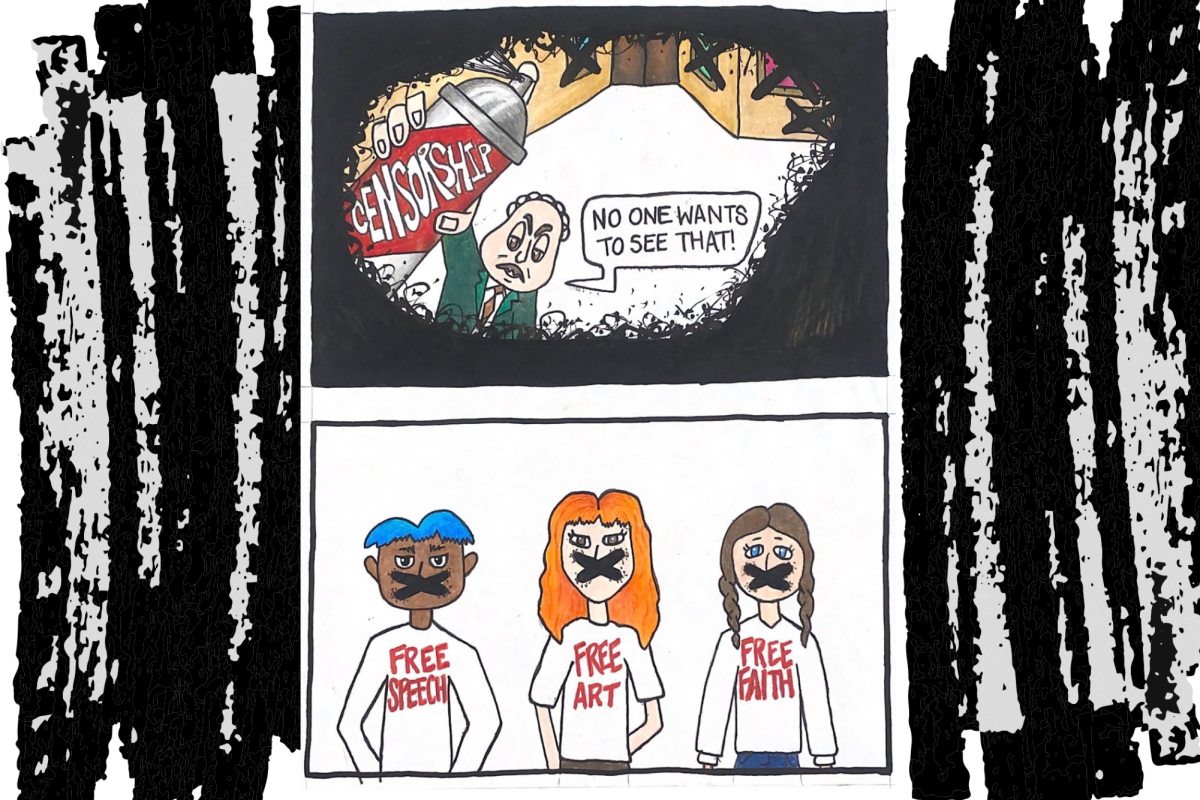For thousands of years, art has been a vessel for the most intimate and powerful forms of human expression, from Pablo Picasso’s chilling, abstract depictions of the horrific Spanish American War with Guernica, to the divine beauty displayed in Michalango’s Creation of Adam.
However, where art truly transcends a lot of other expressionary mediums is with its accessibility; everyone can create art: old, young, sick, healthy- it does not matter.
But what happens when the faucet of accessibility is suddenly shut off?
You see,we have seen incredible creations emerge from every walk of life, including from students at Sunnyslope High School — but you didn’t get to see them all at the SHS Art show.
The classroom of Melanie Legendre, Sunnyslope Art Teacher, is continually brimming with jaw-dropping works that could have been created by the person sitting next to you in Algebra.
A majority of the highest quality works under Legendre’s supervision come from students enrolled in AP Art, a course offered by The College Board that gives students the opportunity to earn college credit for their work.
Students use the school year to construct a portfolio of pieces from a variety of mediums, all of which contribute to a cohesive theme that the artist hopes to convey to its audience.
Many of these themes deal with deeply personal ideas that the student-artist is passionate about sharing with others.
But there is a circumstance that acts as a border on the seeming safe-haven for personal expression that art is.
That circumstance is what is deemed as “appropriate”, and it comes up specifically when looking at student art in particular.
Student art stands caught in the middle of an age-old battle between the right to full self expression by everyone – even at school – and the need to keep things suitable for viewing by a population of children of many ages and backgrounds.
Recently, we saw yet another example of that battle right here at Sunnyslope, and the questions it raises.
Mia Aronsohn and Reagan Hunter are Senior AP Art students at Sunnyslope.
They both have a deep passion for art and have spent their time in high school thus far cultivating their skills and abilities in a variety of mediums.
This hard work largely comes to a head for them in their Senior year, as they construct their AP Art portfolio, exploring a unique theme and message in their works over the course of the year.
The students, including Hunter and Aronsohn, construct these portfolios with the hope of college credit, but also with the hope of displaying their art at the Sunnyslope Art Show at the end of the year.
However, early in the year, Legendre informed the two students that some of their pieces would not be allowed in the art show.
“It first happened with Mia … She had a piece that, at the beginning of the year, Mrs. L told her like, ‘This is not going to be allowed’. And then, I was creating pieces for my portfolio and the same thing happened to me” said Hunter.
This initial discovery was eventually accepted by the two young artists, however, they would experience further disappointment closer to the art show as well.
“I had all of my pieces out, like my [display] board was completely finished, and I went to put it up, and [Legendre] said no to two of them,” said Aronsohn, with Hunter echoing a similar sentiment.
Following the omission of these pieces, Hunter went forward in the art show with the remaining pieces she had; however, Aronsohn made the decision to pull the rest of her pieces from the art show entirely.
“They basically wanted me to be left with 3 pieces to represent my entire portfolio, and I just thought that wasn’t right, so I pulled my last few pieces out. And that was all my own doing,” explained Aronsohn.
In the days that followed the opening of the art show, Aronsohn contacted administration members, meeting with one of them in person.
However, still unsatisfied with the lack of resolution, Aronsohn, Hunter, and several other Sunnyslope students gathered in solidarity outside of the high school on April 23rd, sporting signs protesting the situation.
During the protest, Aronsohn and Hunter were interviewed by AZFamily, a local news channel, who, later that night, aired a story covering the two artist’s struggles with the restriction of their work.
The day after the media coverage, Aronsohn also met with Principal Johnathan Parker to further discuss the situation.
However, by the time the art show concluded on April 25th, no compromise or changes to the original decision was able to be made, so Aronsohn and Hunter’s final art show at Sunnyslope High School concluded without a complete display of their works.
When hearing the facts of this story, the question that naturally arises is, why was the art censored in the first place?
What did it do to deserve restriction?
But, that question, like the many others that arise in this story, is difficult to answer.
According to Hunter, the restriction of display of certain pieces from both her and Aronsohn’s collection stemmed from the fact that the art show was an “all ages event”.
This perspective was shared by Parker, who explained that the GUHSD district mandates that the art be “G rated” to be displayed.
However, Parker himself also acknowledged the unclear nature of that mandate.
Definitively, “G Rated” is supposed to align with “a lack of violence, obscenity, or sexual explicitness.”
Arguably though, many pieces displayed in the art show did not fall under that definition, and Parker himself acknowledged that.
“I don’t think that all of the art in the exhibit was G rated,” said Parker.
But, historically, this is the problem with censorship.
Guidelines are often hard to enforce, and the decision routinely falls into the hands of one or two people, based upon an “I’ll know it when I see it” mindset.
There is a distinct difficulty in crafting clear guidelines for art, as it is a medium with a multitude of interpretations depending on the person viewing it.
“The moment that I begin to label someone else’s art, I am taking the power of the artist and the intent of the artist. The challenge is that any number of people who will walk through that exhibit might not share that same view of the art that I do,” explained Parker.
In this way, the endless interpretation that art offers is what makes it such a double edged sword in terms of restriction and censorship.
A piece may be viewed as completely unacceptable for school by one person, and completely appropriate by another.
Because of this, art shows become a delicate balance of weighing the inherent need for student self-expression, and the need to keep the school a “G” rated place.
And so, when the scales tip too far to one side, administrators are forced to make decisions, as was done here.
However, as Parker explained, this back and forth is an often beneficial constant in the world of artistic expression.
“It’s this conflict between artists and mainstream. The conflict between old and young. It’s always going to be boundary pushing, and ultimately we’re enriched by that … I don’t anticipate we will ever truly agree on where the boundaries are set where both sides are happy,” said Parker.
But, although this struggle may be overall beneficial to society, it does not take away from the negative impacts it had on the artists in this instance.
“It just hurts because you’re not able to tell your story completely when your pieces are restricted,” explained Aronsohn.
This lack of representation for the message behind the art was an integral part of the issue for Hunter as well.
“Everyone in AP Art has an important message that they wanted to share … And so the fact that some people go to show their whole portfolio and that whole message, while Mia and I weren’t was just frustrating,” said Hunter.
The content of the message for these two young artists made the censorship especially disheartening.
Both Hunter and Aronsohn’s works focused on ideas of womanhood, and as Hunter explained, “[The restriction] just sends a message that women should be ashamed of their bodies and that it is not something that people want to see … And so I just think that is a bad message to send to young women here.”
However, despite their frustration with the outcome, Hunter and Aronsohn do recognize the complexity of the situation at hand.
“I understand the pressure that exists, and this is definitely the case where there are going to be people mad on both sides no matter what,” admitted Aronsohn.
But, the duo also expressed their hope to see greater steps taken in the future to communicate more with student artists about these issues.
“When you’re given a position to help make changes for the better, I would hope that you would listen to the people who are trying to help you guys do that,” said Aronsohn.
Luckily, opportunities for improvement with regard to student art regulation are sure to arise again, as the boundaries of what is deemed “acceptable” in artistic display are constantly shifting.
And although Hunter and Aronsohn leave Sunnyslope this May on a bit of a bitter sweet note, they can take solace in knowing the dialogue and conversation they sparked in the never-ending balancing act of art.





























































